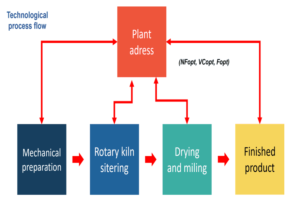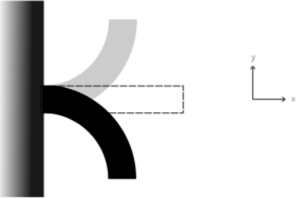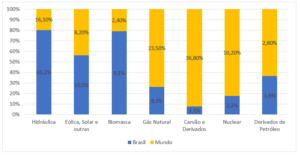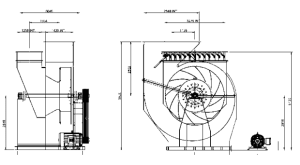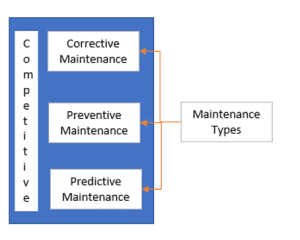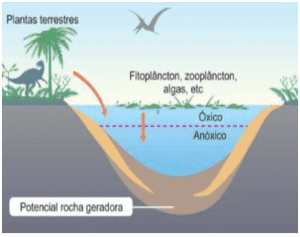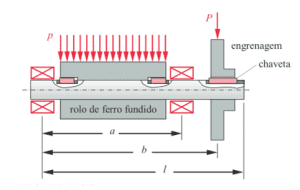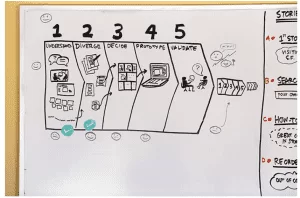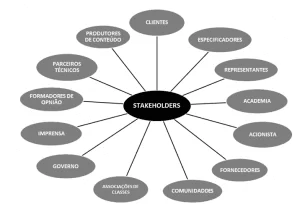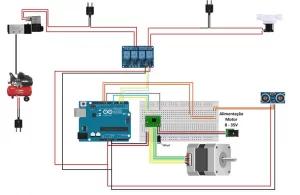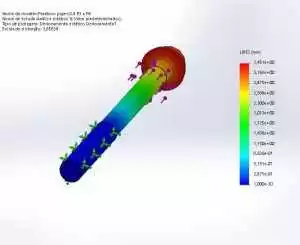ORIGINAL ARTICLE
MELO, Ronnan Hudson Jardim de [1], FERREIRA, Hugo Silva [2], FERREIRA, Gustavo Vinícius Mendes [3], ADÃO, Mauro Claret Rabelo [4]
MELO, Ronnan Hudson Jardim de. Et al. Vehicular Metal Recycling With Reduction in CO² Emissions and Energy Consumption. Revista Científica Multidisciplinar Núcleo do Conhecimento. Year 06, Ed. 06, Vol. 16, pp. 96-140. June 2021. ISSN: 2448-0959, Access link: https://www.nucleodoconhecimento.com.br/engineering-mechanical-engineering/energy-consumption
SUMMARY
The amount of carbon dioxide that is emitted into the Earth’s atmosphere has increased over the years, a factor that contributes to the worsening of the greenhouse effect. Based on this problem, the recycling of metallic materials from vehicles that are at the end of life is an alternative that, in addition to reducing carbon dioxide emissions in the atmosphere, reduces the amount of electricity that is used to obtain the metals present in a vehicle. For the elaboration of this article, the theory of bibliographic review combined with the classification of metal components extracted from an end-of-life vehicle was used as the basis. This classification followed the calculation of the amount of carbon dioxide that was no longer emitted into the atmosphere and the energy that was saved, compared to the conventional methods of manufacturing the metals present in a vehicle.
Keywords: reverse logistics, recycling, carbon dioxide, energy, metal materials.
1. INTRODUCTION
According to Borsari and Asunción (2006), the increase in the concentration of greenhouse gases (GEE) has been one of the biggest environmental problems of the current era. Man’s action has contributed to the increase in the concentration of carbon dioxide (CO2),methane (CH4) and nitrous oxide (N2O) in the Earth’s atmosphere. With the increase in the emission of greenhouse gases, the Earth’s atmosphere could reach twice the amount of carbon dioxide in the early 19th century. Therefore, alternatives are being studied and put into practice to minimize carbon dioxide emissions and thus slow down the greenhouse effect. The recycling of vehicular metal materials is an alternative to be explored.
The U.S. Institute of Metal Scrap Recycling Industries presented data showing that metal recycling can contribute to a considerable reduction in the amount of carbon dioxide that is emitted into the Earth’s atmosphere. About 80% of all material that constitutes a vehicle is metallic. Steel contributes 66% of the total average weight of a vehicle, which also has aluminum, copper, zinc, lead, among others (CASTRO, 2012).
Therefore, recycling the metallic materials that make up a vehicle can be an important alternative to minimize the greenhouse effect.
1.1 OBJECTIVES
The main objective of this article is to show how vehicular recycling specifically related to metallic materials can contribute to reducing carbon dioxide emissions into the Earth’s atmosphere and the amount of energy that can be saved.
The specific objectives of this article are:
a) classify and catalog the components that make up the FIAT Marea 2.4 vehicle;
b) identify and quantify the metallic materials that make up the vehicle under study, measuring its mass;
(c) determine, on the basis of research, the amount of carbon dioxide that can be mitigated in terms of emission into the atmosphere, depending on the recycling of the metallic materials of the vehicle under study, in return for obtaining the materials by conventional methods;
d) determine the amount of electricity that can be saved due to the recycling of the metallic materials of the vehicle under study, in return for obtaining the materials by conventional methods.
1.2 JUSTIFICATIONS
According to the researchers Abreu, Albuquerque and Freitas (2014), the mechanism that causes the planet Earth to remain at an average temperature that provides the maintenance of life on its surface is called the greenhouse effect. However, the excess emission of greenhouse gases (GEE), which includes carbon dioxide (CO2),has aggravated this natural mechanism of the planet. What can generate climate change on Earth, such as rising ocean and air temperatures. Figure 1 shows the percentage contribution of the main gases responsible for the greenhouse effect.
Figure 1: Greenhouse gases
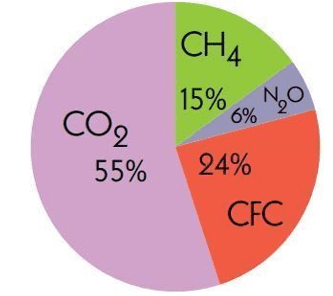
As can be seen in Figure 1, carbon dioxide is one of the main greenhouse gases, with a 55% participation in this phenomenon, constituting the mitigation of this gas due to vehicular recycling, one of the main objectives of this article. Methane (CH4),nitrous oxide (N2O) and CFC gases (chlorofluorocarbons) are also responsible for the greenhouse effect.
In addition to being related to the environment, vehicular recycling is also associated with the economic issue. According to Passos (2013), in the years 1998 and 1999 there was a crisis in the industries in Brazil that triggered a decrease in the number of new vehicles sold in the country. In order to alleviate the crisis, the Vehicle Fleet Renewal and Recycling Program (PRRFV) was created, which involved automakers such as Fiat and General Motors, but which did not continue for long, having been finalized with the increase in sales of new vehicles.
Car sales in Brazil resumed in 2016 that lasted until 2019. However, due to the Covid-19 pandemic, there was a fall in sales in 2020, as shown in Figure 2.
Figure 2: New vehicle sales in Brazil
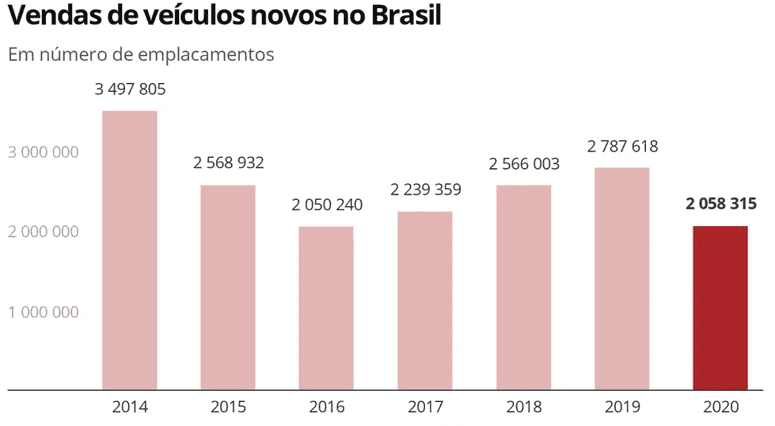
The recycling of metallic materials can contribute to the reduction in the cost of production of vehicles, besides being a less aggressive way to the planet to obtain the same metallic materials used in the industry in general.
In her research, Passos (2013) found that, in Brazil, there is still no adequate structure to carry out the vehicle recycling process. According to data obtained by the Union of Wholesale Trade in Ferrous and Non-Ferrous Scrap (Sindinesfa), 98.5% of the vehicle fleet in Brazil is not properly destined for its end of life, being often abandoned, with only the portion remaining 1.5% is sent to the recycling process.
Worldwide, vehicle recycling processes are highlighted in Europe, the United States and Japan. In Europe, around 5.9% of the vehicle fleet is recycled at the end of its life. This percentage can only be achieved because the vehicle recycling process is regulated by European Directive 2000/53/EC. European automakers are committed to, in addition to enhancing the vehicle recycling process, reducing the emission of carbon dioxide per liter of fuel consumed in a vehicle. In the United States, the percentage of vehicles recycled annually corresponds to 5.6% of the country’s vehicle fleet, and approximately 95% of End of Life Vehicles (ELVs), or End of Life Vehicles, are directed to the process of vehicle recycling. US states and municipalities are responsible for properly handling end-of-life vehicles. In 2007, in Japan, around 4.4% of the country’s total vehicles were being recycled in the form of ELV. In Japan, there is a law that deals with vehicle recycling at the national level since 2005, and its objective is to gradually increase the percentage of vehicle recycling (CASTRO, 2012).
Figures 3 and 4 show the percentage drop in the value of 1.0 cars and 1.8 to 2.0 cars in Brazil during the first eight years of life and the percentage value of these end-of-life vehicles (ELVs).
Figure 3: Percentage value of vehicle sales 1.0 in Brazil
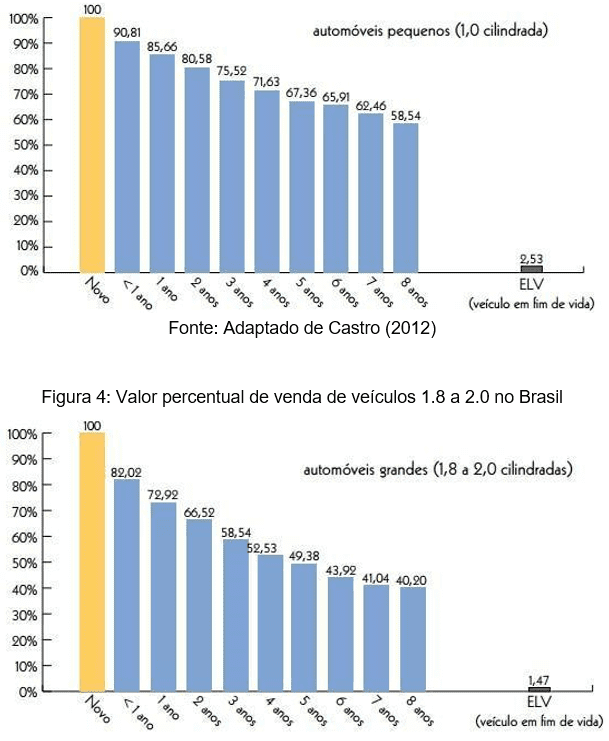
Analyzing the data presented in Figures 3 and 4, it is concluded that, in Brazil, cars 1.8 to 2.0 depreciate faster than cars 1.0 and that they have lower sales value when they become ELVs. Increasing the added value of these ELVs is of great importance for encouraging vehicular recycling.
In view of the data presented, this article aims to analyze methods of how to reduce carbon dioxide emissions by recycling vehicular metallic materials, contributing to the deceleration of the greenhouse effect. Moreover, this article seeks, through the recycling of vehicular metallic materials, a new way of warming the Brazilian economy, since this is a market little explored in the national territory, since Brazil has high potential for the realization of this practice.
2. BIBLIOGRAPHIC REVIEW
This chapter will be presented with scientific foundations for the theoretical basis of the article, such as historical concepts, legislation on vehicular recycling, description of the vehicle recycling process, materials that can be reused in this process, greenhouse effect and how the recycling of metallic materials can reduce carbon dioxide emissions and energy consumption.
2.1 RECYCLING CONCEPT
According to researchers Lomasso et al. (2015), recycling is an alternative used to recover materials that would be discarded, giving them an alternative use as raw material in a new product. The recycling process covers various types of materials, such as metals, plastics, glass and organic waste.
Recycling is a relatively recent process, being introduced during the 1940s during World War II. When the United States entered the conflict, there was a major economic crisis in the country due to spending concentrated in the war, causing the population to suffer from shortages of materials such as paper, fabrics and aluminum. The solution proposed by the government to solve the problem was to encourage residents to donate materials that would be discarded to be reused in industries.
During the 1970s, disposable products emerged in the United States, responsible for significantly increasing the volume of solid waste dumped into the environment. Consequently, there was a discussion of how to balance the growing consumption with the high amount of discarded materials, and recycling was one of the methods used to solve this problem.
In Brazil, during the 1970s there was great concern about the inadequate disposal of waste and the unconscious consumption of raw materials by the industry, generating environmental imbalance. From this, new ways of recycling these wastes emerged in the country, and the paper industry was one of the pioneers in the use of this process, with the use of recycled paper and the realization of reforestation.
In the 1980s, the recycling of plastic materials increased greatly in the country because of the use of bottles of ethylene polyethalate (PET) material. In the 1990s, there was an increase in the recycling of metallic materials in the country, such as aluminum, driven by the increasing use of cans made of this metal.
Jody et al. (2009) highlight the need to practice sustainability, as many of the natural resources currently used are not renewable and are scarce in nature. Future generations of the world’s population will have great difficulties in meeting their needs, living with pollution and lack of resources, if these problems are not solved by the current generation. The large amount of waste that is disposed of as garbage currently represents a smaller amount of resources to be used in the future, a fact that can be minimized with recycling.
2.2 VEHICLE RECYCLING PROCEDURE
According to Castro (2012), when a vehicle reaches the end of its useful life becoming an ELV, the only way to obtain some financial return from it is to separate and process materials that may have some commercial value and sell them as scrap. Among the materials that can be reused, metals are the ones that can bring more relevant financial return, mainly ferrous metals, aluminum and copper, by ease of recycling. Non-metallic materials, such as plastics, glass and rubber, because they are more difficult and, in some cases, even impossible to recycle, have lower commercial value than end-of-life metals.
The vehicular recycling procedure works in stages ranging from the reception of an ELV to the recycling of fragmented materials from these same ELVs. The flowchart presented in Figure 5 presents the steps that involve recycling a vehicle.
Figure 5: Steps of the vehicle recycling process
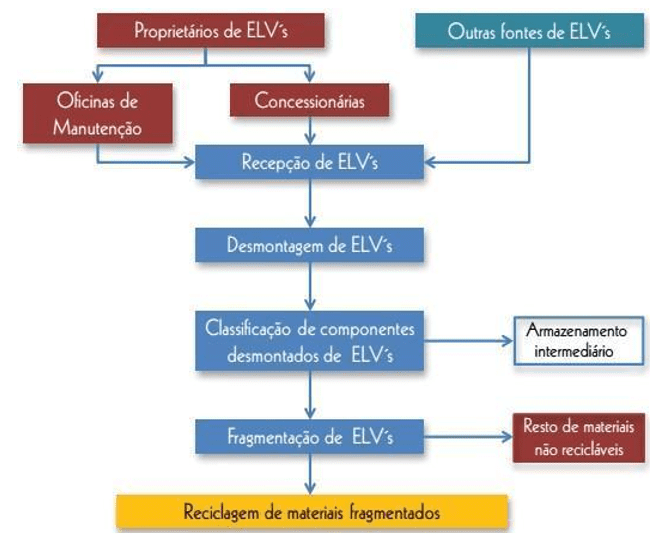
The stages of reception, disassembly and classification of components disassembled from ELVs have the advantage of no need to make displacements between the steps, and the three processes can be performed in the same place. On the other hand, the fragmentation of THE ELVs must be carried out in large deposits, and large machinery is used to carry out the process, and there is a need to transport the disassembled components in the component classification stage. An extremely important step during the process of vehicular recycling is the transport of materials during the stages, and the companies involved in the process must be located at distances from each other so that large displacements are not necessary, so that the process remains economically attractive.
2.2.1 RECEPTION OF ELVs
In his publication, Castro (2012) notes that from the moment an owner forwards his vehicle to a workshop or dealership, for example, and maintenance becomes unfeasible from a financial point of view, there is then the option of forwarding the vehicle to an ELV reception location, starting the recycling procedure. The way in which the ELV will be transported to the reception location should be considered, because, as the vehicle no longer has a condition to move, there is a need to use another vehicle to transport the ELV, and an ELV usually has between 900 kg and 1500 kg. Therefore, this is one of the important factors in the process, because if there is a need to travel long distances with the ELV, the process can become even economically unfeasible, due to the costs of locomotion.
(ELVs) can be obtained by different means. In addition to the example already mentioned, in which the vehicle is taken directly from its owner, one can obtain the ELV, for example, from some company that works in the transport sector or also through traffic departments, such as the DMV in Brazil, and police stations, since when the owner has the vehicle seized and is unable to regularize it , this ends up abandoned in patios until it has no more conditions of use, becoming an ELV.
At the ELV reception site, vehicles are inspected and stored for a maximum of 15 days.
After the period of 15 days of reception of the vehicles, where they go through the identification and inspection processes, these are forwarded to the process of disassembly of ELVs.
2.2.2 DISASSEMBLY OF ELVs
According to Orfale Jr. et al. (2016), among the various components and systems that a vehicle has, some of them release fluids that can offer risk to humans during the recycling process, so these substances must be removed before disassembly of the ELV.
The removed fluids are the fuel in the tank, the engine oils, brake and steering systems, in addition to the gases of the air conditioning system.
The second step in the process of disassembling an ELV is the removal of safety devices, including the airbag system and the existing safety belt devices, the incorrect drive of which can generate some kind of accident.
The third and final step in disassembling an ELV is the disassembly of its components. This step is performed manually in appropriate locations, following safety procedures, with the classification of components throughout the process.
2.2.3 CLASSIFICATION OF ASSEMBLED COMPONENTS OF ELVs
According to Castro (2012), when carrying out the vehicle recycling process, some parts can be reused in their entirety for use in other vehicles, while others must be sent to the fragmentation and recycling process. The reuse of a part extracted from an ELV has benefits such as a reduction in energy and raw material consumption to manufacture a new part, environmental preservation and job creation. The vehicle’s engine and all its components, doors, bumpers, headlights, seats, windows, mirrors and sound systems, as well as other parts that make up a vehicle, can be reused.
For safety reasons, it is not allowed to reuse some components of an ELV, such as wheels, tires, steel cables, batteries, brake and steering systems. Tires, for example, can be reused as fuel for boilers and in the production of ecological asphalt. Those components that cannot be reused are disassembled and sent to shredding. Components made of metals are shipped together with the body shells to companies that work with metal fragmentation. Batteries require greater care in the recycling process, as they can cause harm to human health and the environment.
2.2.4 FRAGMENTATION OF ELVs
According to researchers Orfale Jr. et al. (2016), the stage where the fragmentation of the dismounted ELV is carried out is one of the most important in the entire vehicle recycling process. In it, the reduction of materials is carried out and, later, the transport, more easily, to the companies that will give new shape to them.
According to Castro (2012), after the classification of the components of the ELV, the vehicle wiring system is removed and forwarded to the equipment where the separation of copper from the plastic that surrounds the wires is performed. Copper is already out of the fragmented equipment, and the plastic, which is PVC type, can be reused. It is not recommended to burn the copper wires to remove the plastic because the procedure generates a toxic gas and contributes to the greenhouse effect and air pollution.
Another stage of fragmentation is the removal of the catalyst for the reuse of platinum, palladium and rhodium metals contained in their composition, since these are noble and found only in South Africa and Siberia.
After the steps mentioned, the ELV remains only the carcass of its body, which is forwarded to the companies that fragment the steel that composes it, that is, these reduce the steel in small pieces to be melted and recovered for future use. The carcasses can be routed whole or pressed for volume reduction.
2.2.5 RECYCLING OF FRAGMENTED MATERIALS
According to researchers Orfale Jr. et al. (2016), fragmented materials are forwarded to recycling companies. Metals are melted to be reused in their raw form. Steel, for example, is routed to steel mills, being transformed into products such as bars and plates.
2.3 MATERIALS THAT MAKE UP A VEHICLE
As noted by Passos (2013), the composition of a vehicle may depend on several factors, such as year of manufacture, vehicle model and manufacturer. Table 1 presents the composition of materials and their percentage in relation to the total weight of three Brazilian vehicles manufactured between the late 1970s and early 1980s.
Table 1: Elvs component materials in Brazil
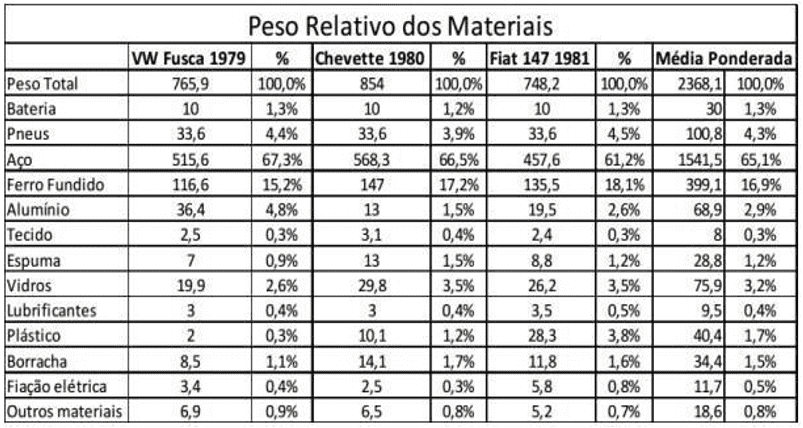
It can be observed in Chart 1 that, in the three vehicles analyzed, the metals added corresponded to about 80% of the total weight of a Brazilian vehicle at the time.
Table 2 and Table 3 show the average material composition of a vehicle according to the year of its manufacture over the years and Table 4 presents the average composition of metals and non-metals of a vehicle in 2007. The values displayed are given in percentage of weight.
Table 2: Composition of materials of a vehicle between 1976 and 1993

Table 3: Composition of materials of a vehicle between 1994 and 2007
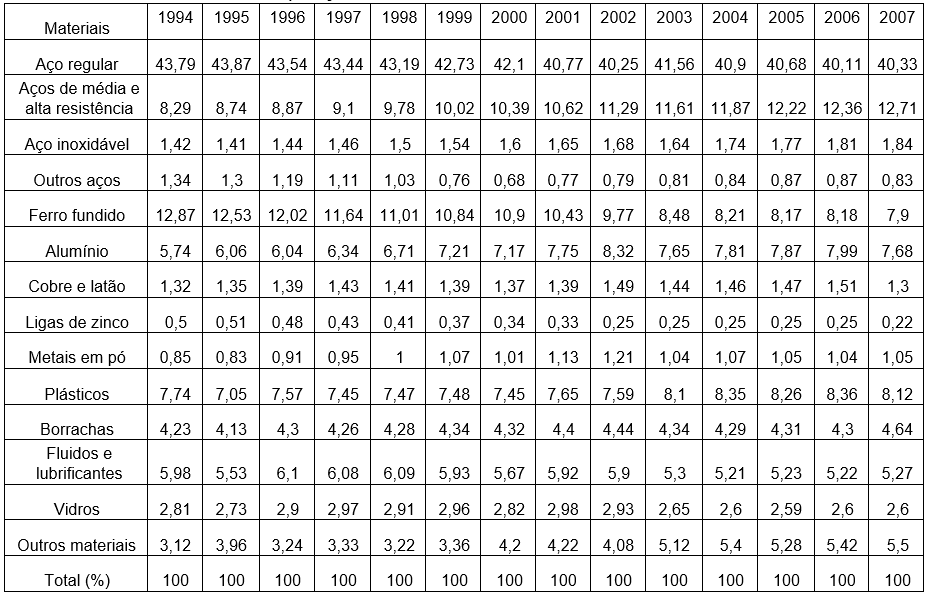
Analyzing the frames, there is a constant reduction in the amount of regular steel used and an increase in the use of more resistant steels and stainless steel. The use of cast iron has had a considerable reduction in use over the years; the use of rubbers remained practically constant around 4%, as well as glass, around 2%. The use of plastics was high in the period, such as the use of aluminum, because they are lighter than steels and thus contribute to the reduction in fuel consumption of vehicles. Other materials had increased use in the range, such as powdered metals.
Table 4: Metals and non-metals in a vehicle
| Material Categories | Weight (%) | |
| brass | Regular steel | 40,33 |
| Medium and high strength steels | 12,71 | |
| Stainless steel | 1,84 | |
| Other steels | 0,83 | |
| cast iron | 7,9 | |
| aluminium | 7,68 | |
| Copper and brass | 1,3 | |
| Zinc alloys | 0,22 | |
| Powdered metals | 1,05 | |
| Subtotal metals | 73,87 | |
| Non-metals | Plastic | 8,12 |
| Rubbers | 4,64 | |
| Fluids and lubricants | 5,27 | |
| glasses | 2,6 | |
| Other materials | 5,5 | |
| Subtotal of Non-metals = | 26,13 | |
| Total = | 100 | |
Source: Adapted from Duranceau and Sawyer-Beaulieu (2011)
It can be observed in Table 4, with data from 2007, that steels, cast iron and aluminum are the most abundant metals in a vehicle. Copper, zinc and other metals are responsible, together, for about 2% of the total weight. Plastics, rubbers, fluids and lubricants, glass and other materials such as foams and fabrics make up the portion of non-metals in a vehicle, which add up to about 26% of its total weight.
According to Bassam et al. (2011), among the technologies that are being applied more and more in vehicles today and the technologies that are intended to be used by the automotive industry in the future regarding materials, is the use of lightweight materials such as aluminum, titanium and magnesium, components reinforced with carbon fiber and fiberglass, new polymers and automotive fluids, as well as hybrid vehicles, fuel cells and hydrogen storage systems. More electronic devices and sensors are also being introduced.
2.4 METALS THAT MAKE UP A VEHICLE AND THE BENEFITS OF RECICING THEM
Aspects related to use and, mainly, the benefits of recycling the metals that make up a vehicle will be presented in this topic, especially ferrous metals and aluminum, which add up to the highest percentage of the weight of a vehicle.
2.4.1 VEHICLE RECYCLING OF FERROUS METALS
According to Passos (2013), the ferrous metals (iron and steel) that make up an ELV are separated from the other ones after the fragmentation process, by means of a technique that uses a magnetic field. After separation, they are sent to steel mills, where they are melted and transformed into raw material for later use. Ferrous metals can be used in infinite recycling cycles while maintaining their original characteristics.
Figure 6 presents a percentage comparison of the environmental impacts caused in steel production by the conventional method using materials such as scrap, iron ore and limestone in a high oven and by the method that uses only recycled scrap in an electric oven.
Figure 6: Environmental impacts on steel production
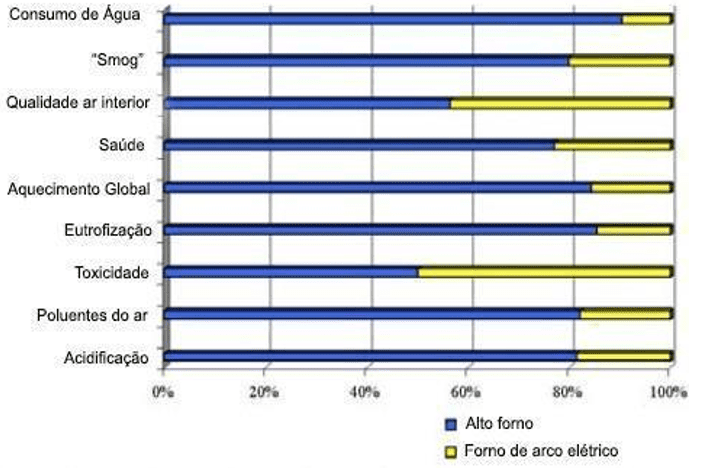
Figure 6 shows that, using steel obtained through recycling and fusing it in an electric oven, the environmental impacts are lower in all aspects. Only toxicity remains constant in both methods of obtaining steel. The term “smog” represents a type of smoke cloud that is generated in processes.
2.4.2 USE OF ALUMINUM IN THE AUTOMOTIVE INDUSTRY
According to Jody et al. (2009), aluminum corresponds to 50% of the financial value of an ELV, and this portion of the metal does not reach 10% of the total weight of a vehicle.
According to researchers Das et al. (2008), the consumption of aluminum in the automotive area has grown considerably in the last 30 years and can continue to grow in order to meet the great demand for the product. Aluminum has a relatively recent entry into the automotive industry and has been seen with good eyes by the automotive industry, because it is a relatively light material with good mechanical strength.
Due to the increased need to reduce emissions and also the costs of energy sources, aluminum has been widely used in the automotive industry in order to solve problems such as reducing the weight of the vehicle without losing performance and safety.
Aluminum has been increasingly used to replace some parts that were once composed of steel. The Ducker report stated that about 61% of aluminum parts of passenger cars and light trucks are components such as engine block, cylinders and collectors. Another portion of 12% of the aluminum content is in the form of sheets, used largely in heat exchangers such as radiators. Other aluminum applications include wheels (15.7%), exterior and interior trim (4.6%), chassis and suspension (2.6%).
Although aluminum alloys have many advantages over steel, there are also some disadvantages when compared, such as their formability and high production cost.
The National Confederation of Industry – CNI (2012) points out that bauxite is a non-renewable resource and that, when recycling aluminum, a smaller extraction of this compound is necessary, which is used in the conventional manufacture of aluminum, thus demanding less use of the environment. Figure 7 shows the world’s leading aluminum producers in 2010, and Brazil was until then ranked seventh. In 2012, 41.1 million tons were produced, adding to the countries presented.
Figure 7: Global aluminum producers in 2010
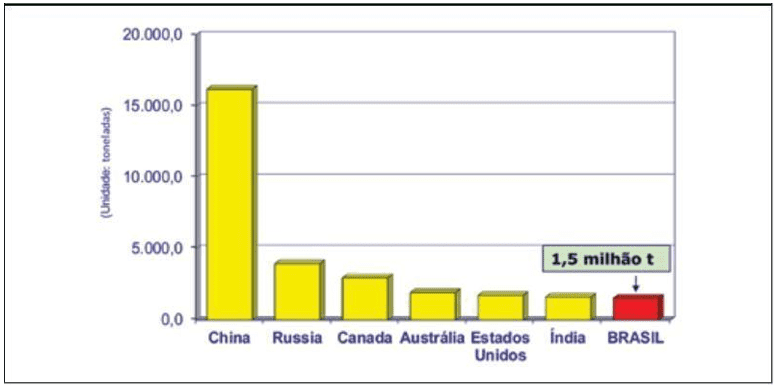
2.4.3 LOW QUANTITY METALS IN AN ELV
In addition to iron, steel and aluminum, are present in an ELV copper, magnesium, lead, nickel and other metals in low quantities. Like aluminum and ferrous metals (iron and steel), the metals mentioned have the possibility of being recycled as many times as necessary, always maintaining their original characteristics. These non-ferrous metals are melted in the recycling process and can be used as raw material for new products.
Lead can be found in the ELV battery, while copper is found in the wirings, and because it is a relatively expensive material, it is treated with enough attention in the process.
Inside the catalyst, which is a mechanism used to convert toxic gases that come out of the engine into gases that are not harmful to human health, platinum, rhodium and palladium, which are high-value metals, are found in low amounts. The catalyst is removed from the ELV during the recycling procedure, and these precious metals are removed from a ceramic present in the composition of the catalyst through a purification process (PASSOS, 2013).
Orfale Jr. et al. (2016) noted that due to the scarcity of copper, which is a relatively expensive metal, it is possible that its recycling will soon become mandatory, and in ELVs it is possible to recover a considerable amount of this metal.
2.5 GREENHOUSE EFFECT AND CARBON DIOXIDE EMISSION
According to researcher Fabi (2004), the greenhouse effect is essential for maintaining life and obtaining liquid water on Earth, because the gases responsible for this effect create a layer in the atmosphere that prevents heat from leaving the planet completely. With the greenhouse effect, the average temperature of the planet is 15ºC; without the greenhouse effect, the temperature would be -18ºC. The main greenhouse gas is carbon dioxide (CO2),and methane (CH4),nitrous oxide (N2O), hydrofluorocarbons (HFCs), among others, are responsible for the greenhouse effect.
The greenhouse effect mentioned is the natural one, without human interference in the emission of greenhouse gases (GEE) into the atmosphere. From the moment human action becomes responsible for emitting GEE, there is an aggravation of the greenhouse effect and, therefore, a risk of an increase in the Earth’s average temperature, which can generate environmental imbalance. For this reason, in 1997, the Quioto Protocol was created in Japan, which defines targets for reducing GEE emissions in industrialized countries, as a way of reacting to the high rate of GEE emissions.
2.6 CARBON DIOXIDE EMISSION AND VEHICULAR RECYCLING
According to the Ministry of Science and Technology (2010), to produce steel from iron ore, carbon dioxide is the greenhouse gas that has the most relevant emissions in the process. Carbon dioxide is emitted during the process of transporting raw materials, from the generation of energy and fuels that are used, and mainly from the production of pig iron, in which iron ore is reduced. This last step accounts for about 75% of carbon dioxide emissions during the steel procurement process. Figure 8 shows how carbon dioxide is emitted from pig iron production in the oven. Figure 9 shows the amount of carbon dioxide emitted in the production of steel and pig iron in Brazil over a period of 17 years.
Figure 8: Carbon dioxide emission in pig iron production
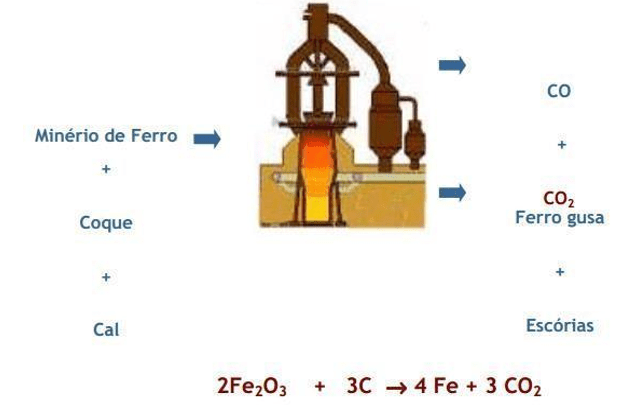
Figure 9: Carbon dioxide emissions in pig iron and steel production in Brazil
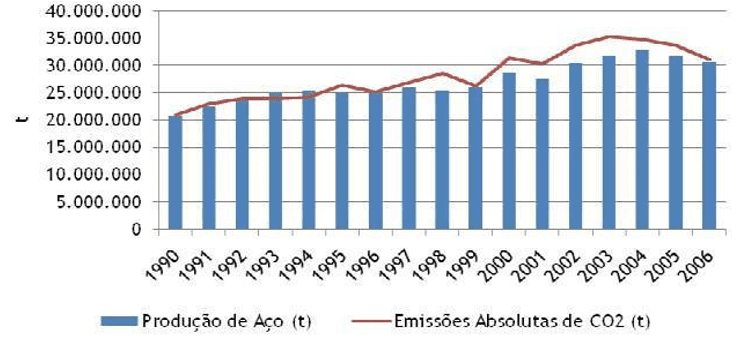
According to Sousa (2013), there are two ways to obtain steel. One is using iron ore and scrap, consisting of several steps, which includes obtaining the pig iron in a high oven, a process shown in Figure 9. The other way to obtain steel is simpler, only scrap obtained through recycling and an electricity-consuming oven is required. In the process that uses iron ore and scrap in a high oven, for every 1 kg of steel obtained, 2,494 kg of carbon dioxide is emitted into the atmosphere. In the process that uses scrap in an electric oven, every 1 kg of steel obtained, 0.462 kg of carbon dioxide is emitted into the atmosphere. This value corresponds to 2,032 kg less carbon dioxide emitted per kg of steel produced, i.e. 81.48% less carbon dioxide emitted into the atmosphere.
According to calculations by Massi et al. (2019), for each ton of aluminum that is intended for recycling, a reduction of 16,301.02 tons of carbon dioxide that would be emitted into the atmosphere is achieved.
The National Confederation of Industry – CNI (2012) points out that, in Brazil, steel production is carried out with the most advanced technology currently existing, but that carbon dioxide emissions are still high. Research is underway to further reduce these emissions, but the results will still take many years to appear. Another alternative is the increase in the recycling of steel, which is the most recycled material in the world.
According to Das et al. (2008), toxic air emissions and solid waste can be minimized by recycling aluminum scrap, which can reduce 95% of carbon dioxide emissions to the environment compared to the conventional method of obtaining this metal.
According to researchers Jody et al. (2009), vehicular recycling worldwide contributes to the annual reduction of the emission of 11 million tons of carbon dioxide into the Earth’s atmosphere.
2.7 ENERGY CONSUMPTION AND VEHICULAR RECYCLING
Data obtained by orfale jr. researchers et al. (2016) indicate that vehicular recycling contributes to the reduction of the use of conventional means of manufacture of various items, thus considerably reducing energy consumption in several countries of the world. With one ton of recycled steel, the use of 1100 kg of iron ore, 635 kg of coal and 54 kg of limestone is avoided.
Data obtained by the Automobile Recyclers Association (ARA) indicate that annually, with vehicle recycling, about 381 million liters of fuel (gasoline and diesel) are recovered from ELVs, 91 million liters of engine oil, 30 million liters of engine coolant gas, 17 million liters of windshield washing fluid , in addition to 96% of the total batteries obtained.
Castro (2012) notes that you can save large amounts of electricity using the recycling process, and with the recycling of steel, you can save 56% of the electricity that would be used by conventional methods. With copper, this percentage can reach 90%, and with aluminum, 92%. This reduction is highly beneficial, because, if it is considered that when energy comes from a non-renewable source, such as coal, which is a considerably expensive source, there is a reduction in the emission of pollutants, when extracting iron ore for steel production, there is a large indirect consumption of water, which can also be saved using vehicular recycling.
Figure 10 commends the amount of energy that is spent when producing conventional steel using materials such as recycled scrap, iron ore and limestone in a high furnace and the amount of energy spent using only recycled scrap in an electric arc furnace.
Figure 10: Energy used in two steel manufacturing processes
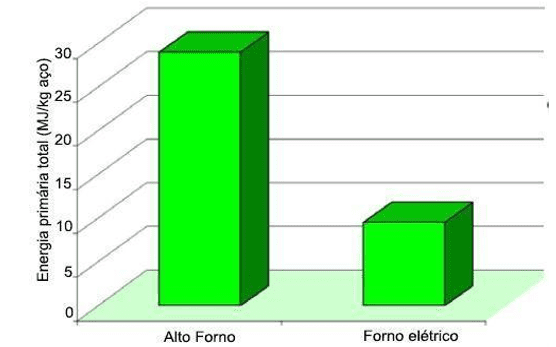
2.7.1 ENERGY CONSUMPTION IN ALUMINUM PRODUCTION
According to Das et al. (2008), data from the U.S. Department of Energy (2002) indicate that to produce 1kg of primary aluminum (produced from ore), an amount of energy would be required through the 45 kWh casting process, while to produce the same amount of secondary aluminum from recycled metal, it would only require 2.8 kWh.
In addition to requiring greater energy, much of the primary aluminum production comes from electricity generated from coal. The use of this energy source to obtain primary aluminum creates large amounts of gaseous emissions and solid and liquid waste, such as carbon dioxide and nitrogen oxide. With the recycling of aluminum scrap, one can have a 95% reduction in energy consumption compared to mining, refining and casting of bauxite, which is the iron ore used for the manufacture of aluminum.
The use of secondary aluminum is becoming a very important component in aluminum production due to its economic and environmental benefit, which can significantly improve sustainability in the aluminum production industries.
2.8 THE MAIN VEHICLE SYSTEMS AND COMPONENTS
2.8.1 ENGINE
Tillmann (2013), points out in his research that the engine is divided into several components that can be segmented into two groups. The first group is the fixed components, which include the block, the head and the sumeb; and the second group are the moving components, which are the pistons, the connecting rods, the shirts, the crankshaft or crankshaft, the valve control shaft, the intake valves and the exhaust valves, the steering wheel, among others. The components of an engine are illustrated in Figure 11, in a cross-section.
Figure 11: Components of a type 4-cylinder engine
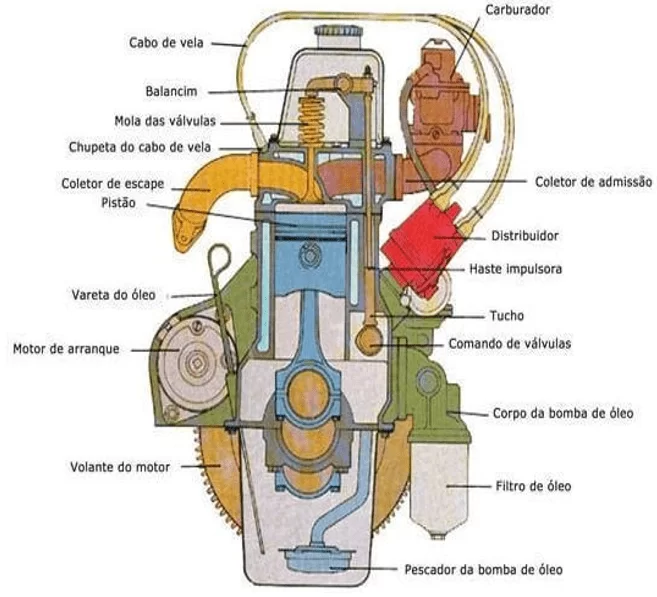
The engine block is the main component for engine structure and is manufactured from the casting process, going through a thermal normalization process before being machined. It is usually used in cast iron, wrought iron, cast aluminum and forged aluminum, depending on considerations and the type of manufacture. Current engines use aluminum and alloys in place of cast iron used in older engines, improving heat dissipation and reducing the weight of the automobile, which, in contrast, increases the cost of manufacturing.
The head is located in the upper part of the engine and has the function of capping the cylinders, forming the combustion chamber next to the block. The union of the block with the head requires a metal coated asbestos joint for total sealing of the system. The head is manufactured by the casting process and is usually used as cast iron material or aluminum alloys when there is a need for weight reduction and better heat dissipation system.
The sump is in the lower part of the engine, connected to the block, and has the function of deposit for lubricating oil, and, as well as on the head, also requires a metal seal between the sump and the block. The crankcase is usually made of cast iron or cast aluminum and houses the crankshaft and oil pump.
Intake valves and exhaust valves are responsible for the intake of the fuel and oxygen mixture and the exhaustion of gases from combustion from inside the cylinder. Valves are subject to high thermal demands, so it is necessary to use steel alloys that can help dissipate the heat that passes through the valve body. The intake valves are steel, nickel steel or chrome-nickel. The exhaust valves are of a steel alloy, of high content of nickel, chromium and tungsten.
The valve control shaft has the function of opening the intake valves and the exhaust valves, respectively. It is made of forged steel or cast iron through the casting process.
Pistons are responsible for containing the expansion of gases in the combustion chamber, transforming pressure into linear force. Therefore, they are subject to high thermal demands. It is attached to the crankshaft by means of a connecting rod. The pistons are manufactured by means of a malleable casting and aluminum or steel alloys are used, allowing them to be more light and more heat dissipating.
The crankshaft or crankshaft is the motor power shaft, installed in the lower part of the motor on the inside of the crankcase. The crankshaft has complex geometry and is manufactured in steel by the forging process, soon after, it is forwarded to the machining process in order to receive its appropriate surface finish.
The engine steering wheel is responsible for the smoother movement of the engine, balancing the crankshaft’s rotation and absorbing energy at the time of combustion and reproducing at non-engine moments. The steering wheel consists of casting or molded steel.
2.8.2 TRANSMISSION
The automotive transmission system basically has the function of transmitting engine torque, attaching to the steering wheel, to the wheels. The transmission consists of a set of mechanical components, such as the clutch, which engages and disengages the engine by friction and is driven by a pedal that goes inside the cab. Usually its components are produced from steel, with the exception of the clutch disc, which consists of ceramic material. In automatic transmission, the clutch is hydraulic, composed of pump and turbine, with a torque converter inside a housing. Both the housing and gear trains and levers are produced from metal materials composed of steel, however, inside the housing, there is a need to maintain a volume of oil that has the function of lubricating and cooling the system. After the box, the movement is transmitted by axles, semi-axles and components such as cardans, differentials, homokinetics and wheel fixing flanges, steel composite parts (COSTA, 2002).
2.8.3 BODYWORK
Costa (2002) observed that the body of an automobile plays a very important role in its formation. It behaves like a beam supported at each end by the wheels, which needs to be relatively strong not to bend in the middle, and should have a high bending resistance, but it is necessary that the material used is not too heavy, as it would increase the weight of the car significantly. It is also necessary to meet the safety coefficients. The body is usually manufactured using steel, but some automakers use aluminum and even carbon parts, processes that, although more expensive, maintain good strength and considerably decrease the final weight of the vehicle. An example of a body is presented in Figure 12.
Figure 12: Body of a car
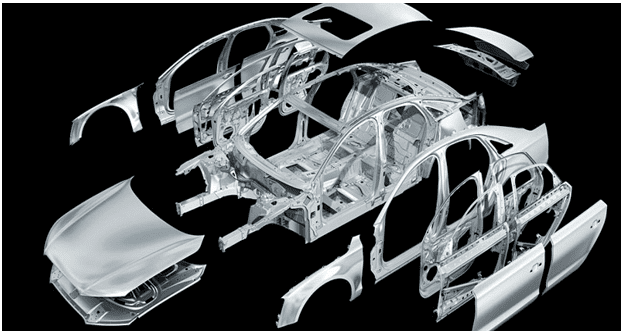
Other body components, which include coatings, glass and the bumper, are not made of metals.
2.8.4 CHASSIS
The chassis of an automobile consists of wheels and suspension system. According to Costa (2002), the wheels do not only have to be round, but must also be composed of light materials, but with good strength. Currently there are three types of wheels used in the automotive market, which are the pressed steel wheels, the spokes wheels and the alloy wheels. The most common and having a lower production cost are the pressed steel wheels. Today’s vehicles have, for the most part, this type of wheel, because they are light, strong, have a low manufacturing cost in large quantity and are resistant to occasional damage. They must have some holes in order to allow air to pass through for cooling the brakes. However, some manufacturers used a technique where this could be a disadvantage, since perforations in the wheel can cause problems with its resistance, but this technique has made these perforations advantageous, once the holes are opened, with their edges facing the interior, thus increasing their resistance.
The lightning wheels were widely used by the first vehicles many years ago. In the present day, they are more common in motorcycles and bicycles, and there is not much use in cars and trucks.
Alloy wheels have also been widely used in the automotive market due to their high strength, because they have lower weight when compared to steel wheels, and also because they are great heat conductors, dispersing more quickly the heat generated by brakes and tires than steel wheels. Alloy wheels are usually manufactured by aluminum and magnesium alloys, making it a more expensive manufacturing process than the other.
According to Rezende (2007), the suspension system is basically composed of springs, shock absorbers, bushings and tires. This system is responsible for cushioning the impacts of the tracks, bringing comfort to the occupants of the vehicle. The springs and shock absorbers are basically composed of steel and the bushings are composed of two steel shirts, which are surrounded by natural rubber. Tires are composed of rubber. Figure 13 presents an automotive suspension system.
Figure 13: Automotive suspension system
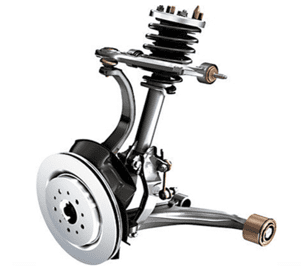
2.9 WORLD SITUATION AND LEGISLATION OF THE VEHICULAR RECYCLING PROCESS
According to Orfale Jr. et al. (2016), of the 10 markets in which cars were sold the most in 2015, only Brazil and India do not have regulatory legislation for the practice of automotive recycling. Figure 14 shows the countries that sold the most cars in 2014 and 2015, showing the variation in sales from one year to the next. About 89.7 million cars were sold worldwide in 2015.
Figure 14: Car sales ranking in 2014 and 2015
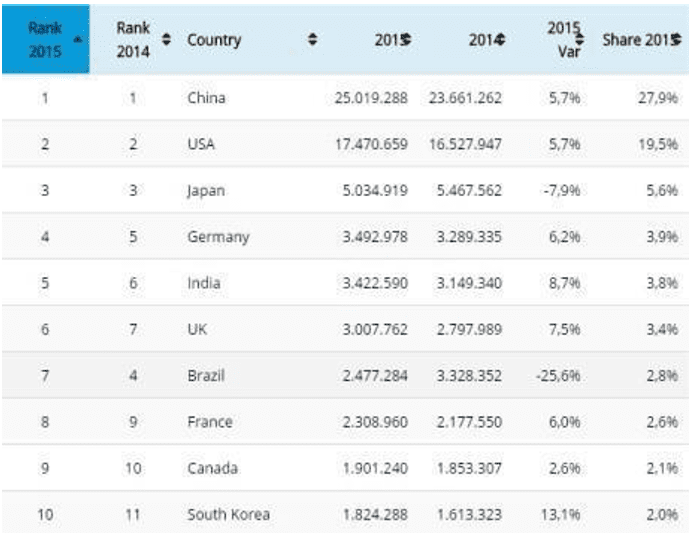
Directive 2000/53/EC is in force in the European Union, which regulated the reuse, recycling and recovery of ELVs, not applicable to large, old and utility vehicles, based on holding manufacturers and importers liable for the process as well as costs. However, there is a permit to make adjustments necessary for each country of the set due to its particularities, also based on ensuring that new vehicles have a minimum of 85% of their mass with the possibility of being reused. Recycling centers can only operate with government authorization and must provide proof of receipt to owners when they deliver their vehicles to recycling. Disassembly of the car with the subsequent separation of the parts according to their material and level of dangerousness is also required in the Directive. The European Commission monitors the activity and sets targets for the sector.
In the United States there is a great efficiency in vehicular recycling. Although there is no law covering the entire national territory, each state carries out the activity following its own rules. Automotive recycling is an old activity in the country, where there is the Automotive Recyclers Association, which, in partnership with the Data Protection Agency, has created a portal with the rules and specificities of each state to facilitate the understanding and execution of activities in the country. In general, U.S. states are concerned about collecting, storing, and allocating the fluids contained in the ELVs, taking care that they are not dumped into the wild. In addition, there is a concern to limit the disposal of toxic materials, in general, waste crushed as hazardous. Finally, it is noted that the philosophy of activity in the United States is directed to environmental sustainability, more than profitability.
Japan is a country in great evolution in car recycling, and there is a lot of investment in studies for the development of technologies for the processing of ELVs. In 2005, there was national regulation via legislation, which holds the owner of the vehicle responsible for the costs of recycling, as well as for transporting it to the authorized processing center. Every new vehicle, national or imported, must have a disassembly manual provided by the manufacturer.
In China, about 9 to 12 million vehicles became ELVs in 2015, with estimates of 12 to 16 million by 2020. In the country, the “Motor Vehicle Product Recovery Technology Policy” was published, with targets for recycling materials, as being 80% of the total mass of vehicles in 2010, for example, but there is still some inefficiency of the Chinese market to achieve such numbers.
In India, there is no legal regulation regarding the market, there is only a government-led direction, through the Central Pollution Control Board, in order to unite those interested in automotive recycling, such as the government itself, manufacturers, dealers and recyclers to address and discuss the directions.
Brazil, like India, does not yet have legislation for the recycling of ELVs, but there is Bill No. 67/2013. Law No. 12,977 of May 2014 regulates the disassembly process aimed at delimiting the illegal trade in used parts. As much as in general the country presents good numbers in recycling materials such as paper, aluminum, and glass, the recycling market of the growing number of ELVs remains small and with slow evolution. It’s common for these vehicles to be sighted abandoned, and the junkyard is always full.
2.10 BENEFITS OF RECYCLING AN ELV
As noted by Orfale Jr. et al. (2016), the metallic materials obtained in an ELV, after being recycled, become raw material for use in steel mills and electric arc furnaces, for example. In addition, with the reuse of non-ferrous metals, such as aluminum and copper, there is the possibility of use in the industry to manufacture several new products.
Through vehicular recycling there is also the reduction of the emission of greenhouse gases (GEE), with emphasis on carbon dioxide, which, with the use of recycled metals, has its emission reduced compared to conventional manufacturing. There are also, as benefits of vehicular recycling, the reduction of pollution levels in air and water.
Two important considerations about vehicle recycling are the costs of energy and products obtained from the process. Jody et al. (2009) highlight that recycling ELVs materials increases the recyclability of vehicles, reduces the price of obtaining the materials and contributes to energy savings. Figure 15 shows the price of some materials sold on the market and cites the example of steel, in which recycled scrap, after going through manufacturing processes, has its added value considerably increased.
Figure 15: Market value of some materials and increase in the value of steel
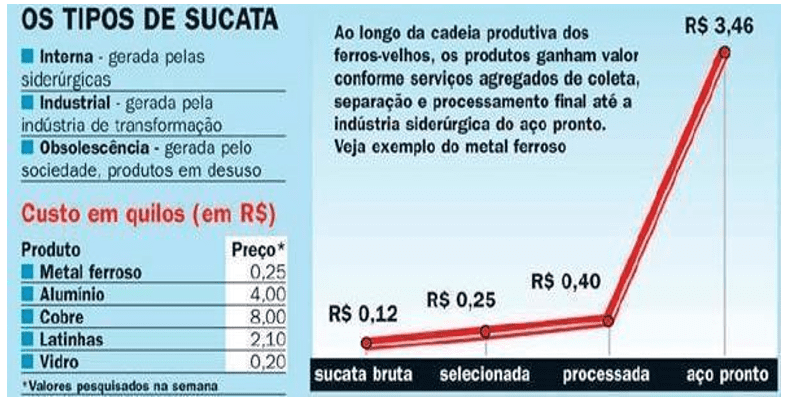
2.11 THE FUTURE OF VEHICULAR RECYCLING
Bassam et al. (2011) noted that new technologies are being implemented in the automotive industry, such as electric vehicles, hybrid vehicles and hydrogen-based vehicles. In addition, new emission control systems for polluting gases and catalysts are being designed and applied to vehicles. Along with these materials comes a new opportunity in the recycling market, as recycling will cause the market value of these materials to lower, bringing benefits to both manufacturers and consumers.
Figure 16 shows a projection of the number of vehicles in millions of units in the world over time. The chart includes cars, trucks and buses.
Figure 16: Number of vehicles in the world over time
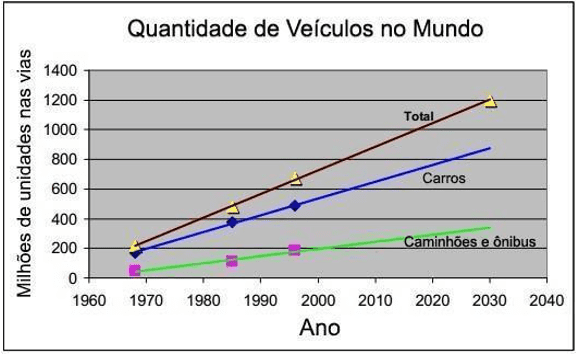
Analyzing Figure 16, there is a considerable increase in the number of vehicles by 2030, a factor that serves as an incentive for the practice of vehicular recycling.
2.11.1 PREDICTION OF THE RECYCLING PROCESS DURING VEHICLE DEVELOPMENT
According to researchers Zettier et al. (2000), according to targets set by European recycling legislation, at least 85% of the weight of a vehicle’s materials must be adequate to be recycled from the moment it becomes an ELV. In Germany, a target has been set to recycle 95% of a vehicle’s total weight since 2015. From this, the German company BMW has developed a virtual tool to predict how the recycling of the vehicle will be performed before it is even ready, according to the software screen presented in Figure 17.
Figure 17: Recycling software used by BMW
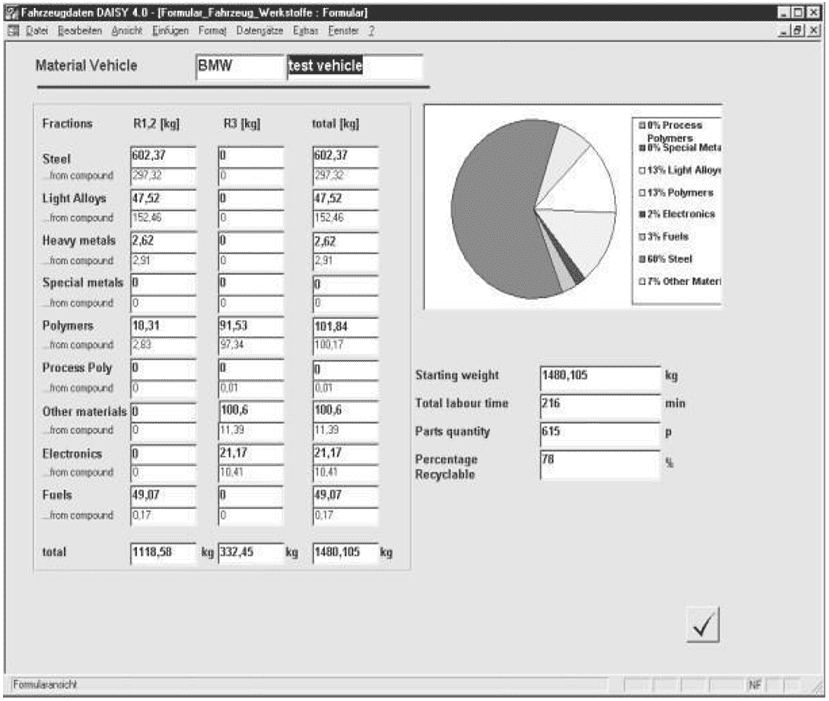
The tool that performs this procedure is called The Dismantling Analysis Information System, or DAISY, which performs virtually the entire process of disassembling a vehicle during its development phases. The software is able to pass on to the manufacturer detailed information regarding the recycling of a vehicle, such as the materials that compose it. As can be seen in Figure 17, the program presents information related to the amount of steel, light alloys, heavy metals, polymers, fuels, among others. In addition, the program provides information such as weight and percentage of recyclability of the material. The functionality of this type of tool can be one of the alternatives of the future to use in the industry, maximizing the reuse of ELVs.
3. EXPERIMENTAL METHODOLOGY
This chapter presents the specification of the experimental apparatus for the classification of metallic materials of ELV in the laboratories of PUC Minas in Contagem, MG. The classification of metallic materials obtained from the ELV made available for the preparation of this article was carried out based on the theory presented in chapter 2, with the use of adequate equipment and trained professionals to guide the group.
To obtain recycled materials, automotive parts and components of the selected vehicle were used.
The vehicle used was a Fiat Marea 2.4, with 5 cylinders, in the form of ELV, shown in Figure 18.
Figure 18: ELV used to carry out the practice
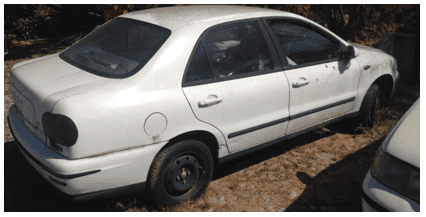
The vehicle in question, in end-of-life condition (ELV), had been parked for about 18 years in the courtyard of PUC Minas, in Contagem, without any use, having remained there since it was given in a new state by the manufacturer Fiat in the year 2000, to be used for academic purposes at the university.
In addition to the vehicle mentioned, the following equipment provided by PUC Minas was used:
a) Laboratory tools such as keys, pliers, cutting tools, carts for transporting parts, among others. Some tools are presented in Figure 19;
Figure 19: Tools used
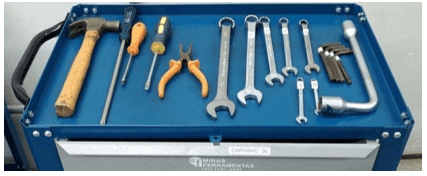
b) balance of the manufacturer Welmy, which is of up to 150 kg. The balance is shown in Figure 20;
Figure 20: Scale used for weighing the metal parts of the vehicle
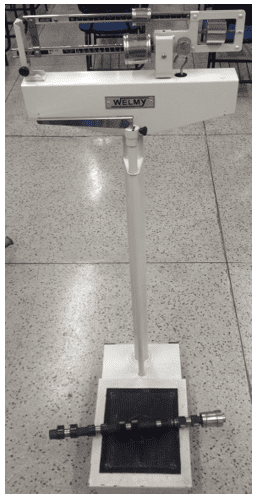
c) compartments for storing the parts in a covered place.
4. RESULTS
The results obtained are shown in Table 1. It catalogs the components and metallic materials that are part of its composition. The components presented in the figures had their non-metallic materials, such as glass, rubber and plastics removed.
Table 1: Results obtained

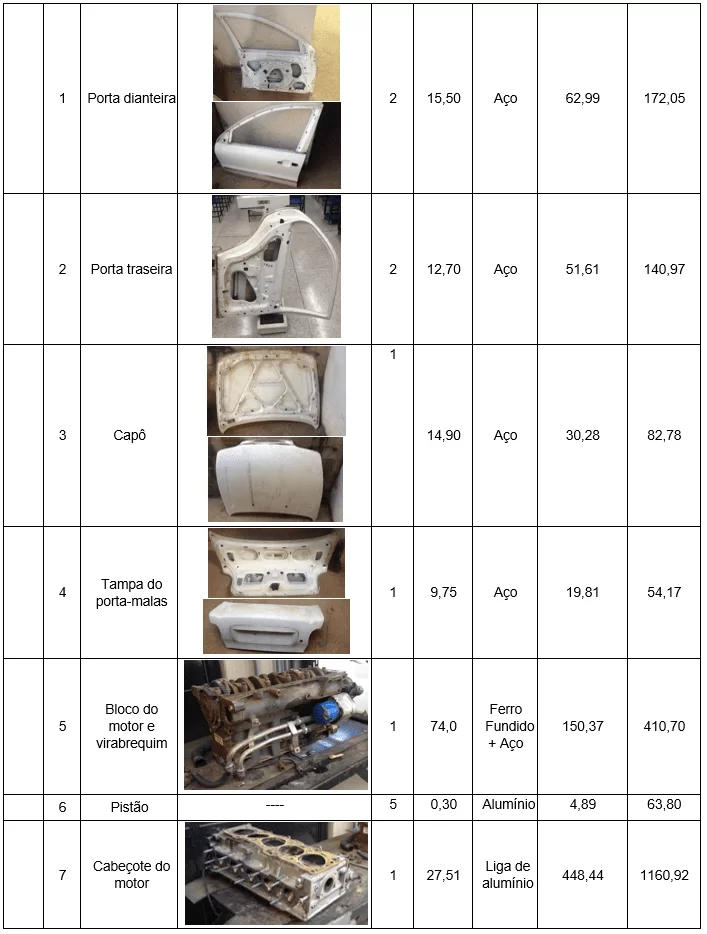
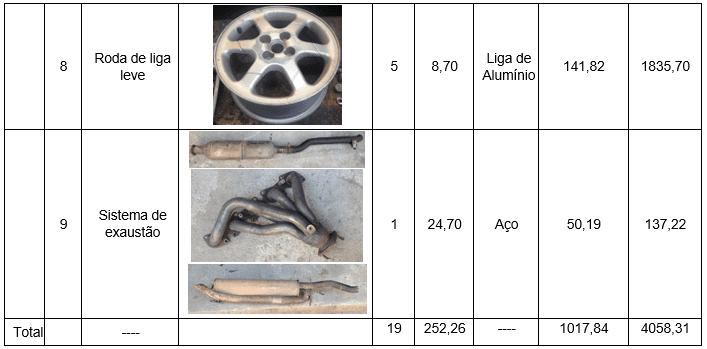
Based on the theory presented in Chapter 2 of this article, it was possible to estimate the amount of carbon dioxide (CO2) that would no longer be emitted into the Earth’s atmosphere by recycling the cataloged parts. According to Sousa (2013), for every 1 kg of recycled steel, 2,032 kg of CO2 would no longer be emitted into the atmosphere. Performing the calculations on the studies presented by Massi et al. (2019), for every 1 kg of recycled aluminum, 16,301 kg of CO2 would no longer be etheredinto the atmosphere.
The same idea applies to the amount of energy that would be saved. According to Gervásio (2008), for every 1 kg of recycled steel, 5.55 kWh of energy would be saved. According to Das et al. (2008), for every 1 kg of recycled aluminum, 42.2 kWh of energy would be saved.
The values found were obtained based on the theory presented in this article. Different types of alloys can be verified in the steel-based and aluminum-based vehicle, making the results actually vary in both the amount of carbon dioxide emitted and the energy saved.
Low-sea metals, such as copper, zinc and brass, were not taken into account for the calculation of the reduction of carbon dioxide emissions and energy savings. Steeland aluminum make up most of them in metallic mass in an end-of-life vehicle, which are the most relevant metals for this type of study.
5. CONCLUSIONS
In this chapter will be presented the conclusions of the article based on the results obtained in Chapter 4 and the theory seen in chapter 2. Suggestions for future work are also presented.
5.1 RESULTS OF THE CLASSIFICATION OF THE FIAT MAREA VEHICLE 2.4
a) It was observed, during the process of classification of the parts of a vehicle, that vehicle recycling requires trained labor and adequate equipment, so that the process is executed in a short period of time, making it financially viable. In Brazil, vehicular recycling can become a major generator of jobs, as there is a large number of abandoned end-of-life vehicles in the national territory, with the potential to carry out the recycling process.
b) It should be noted that most of the parts found in the vehicle were able to be used in other vehicles of the same model. The engine, undergoing a rectification, would be able to be reused. The body, including doors, hood, headlights and trunk cover, were in good condition. The wheels, transmission systems and suspension system were also usable.
c) In an everyday situation, the vehicle could be reformed to be used again. However, it would require a high investment in parts and manpower for its reuse. The best option for the disassembled vehicle would be to separate sale of most of its parts.
5.2 SUGGESTIONS FOR FUTURE WORK
(a) assess all costs of the vehicular recycling process. Check labor and transportation costs during the recycling procedure. Compare the value of metal parts before and after they are merged. Check the price of all parts of an end-of-life vehicle;
b) To prepare a study only with non-metallic end-of-life materials. To evaluate the possibility of recycling non-metallic items such as glass, plastics, rubbers, foams and fabrics. Compare pollutant emissions and energy expenditure to obtain non-metallic materials that make up an end-of-life vehicle through recycling;
(c) describe the recycling process of vehicles other than end-of-life cars, such as motorcycles, trucks and bicycles;
d) Evaluate the costs of assembling a vehicle recycling workshop, verifying how long a profit can be obtained from this business project;
e) To carry out a study with the objective of merging the classified metal parts to carry out the study of carbon dioxide emissions and energy consumption, in order to validate the results that were obtained in this article. The parts extracted from the vehicle and those that have not yet been extracted will be available to the university for future studies;
f) Design a workshop in order to carry out studies related to the practice of vehicular recycling, with adequate equipment and working in a closed environment for preservation and storage of vehicle parts;
g) Compare the carbon dioxide emission values that were no longer emitted by recycling the vehicle’s vehicle’s vehicle metal materials studied with the amount of carbon dioxide that would be emitted by the same vehicle at discharge in a given time interval.
REFERENCES
ABREU, Mônica Cavalcanti Sá de. ALBUQUERQUE, Aline Mota. FREITAS, Ana Rita Pinheiro de. Posicionamento estratégico em resposta às restrições regulatórias de emissões de gases do efeito estufa. Revista de Administração (São Paulo), v. 49, n. 3, ISSN 1984-6142, 2014. Disponível em: http://www.scielo.br/scielo.php?pid=S0080-21072014000300011&script=sci_abstract&tlng=pt. Acesso em: 8 mar. 2021.
AUTOMOTIVA, WS Suspensão. Produtos da WS Suspensão. 2021. Disponível em: https://www.wssuspensaoautomotiva.com.br/assets/fotos-rodas/k15-gl.jpg. Acesso em: 6 mar. 2021.
BASSAM, Jody et al. Recycling of the Changing Automobile and Its Impact on Sustainability. 2011.
BORSARI, Vanderlei. ASSUNÇÃO, João Vicente de. As Emissões de Gases do Efeito Estufa por Veículos Automotores Leves. 2006. Disponível em: http://www3.sp.senac.br/hotsites/blogs/InterfacEHS/wp-content/uploads/2013/08/1_ARTIGO_vol5n2.pdf. Acesso em: 5 mar. 2021.
BRASIL. Confederação Nacional da Indústria. A Indústria do Aço no Brasil. Brasília: CNI, 50 p, 2012. Disponível em: http://arquivos.portaldaindustria.com.br/app/conteudo_24/2012/09/03/191/20121122181146586007o.pdf. Acesso em: 8 mar. 2021.
BRASIL. Confederação Nacional da Indústria. A Sustentabilidade da Indústria Brasileira do Alumínio. Brasília: CNI, 44 p, 2012. Disponível em:
http://arquivos.portaldaindustria.com.br/app/conteudo_24/2012/09/03/191/20121122181146586007o.pdf. Acesso em: 8 mar. 2021.
BRASIL. Ministério da Ciência e Tecnologia. Emissões de Gases de Efeito Estufa nos Processos Industriais – Produção de Metais. Ferro e Aço. Brasília, 2010. Disponível em: https://cetesb.sp.gov.br/inventario-gee-sp/wp-content/uploads/sites/34/2014/04/brasil_mcti_ferro_aco.pdf. Acesso em: 8 mar. 2021.
CASTRO, Daniel E. Reciclagem e Sustentabilidade na Indústria Automobilística. Belo Horizonte, 2012. Disponível em: https://www.jica.go.jp/brazil/portuguese/office/news/2013/c8h0vm00005kn48g-att/c8h0vm00005kn4bu.pdf.Acesso em: 8 mar. 2021.
COSTA, P. G. A Bíblia do Carro. Rio Grande 4×4, 244 p, 2002. Disponível em: http://www.riogrande4x4.com.br/attachments/767_Biblia_do_carro.PDF. Acesso em: 5 mar. 2021.
DAS, Subodh K. et al. Formability Evaluation of Recycle-Friendly Automotive Aluminum Alloys. 2008.
DURANCEAU, Claudia M. SAWYER-BEAULIEU, Susan. Vehicle Recycling, Reuse, and Recovery: Material Disposition from Current End-of-Life Vehicles. 2011.
FABI, Andréa Rodrigues. Comparação do Consumo de Energia e Emissão de CO2 entre Garrafas PET e de Vidro, Utilizando Análise Ambiental de Ciclo de Vida. 2004. 143 f. Dissertação (Mestrado) – Universidade Estadual de Campinas, Faculdade de Engenharia Mecânica, Campinas, 2004. Disponível em: http://repositorio.unicamp.br/bitstream/REPOSIP/264861/1/Fabi_AndreaRodrigues_M.pdf. Acesso em: 5 mar. 2021.
FONTANA, Guilherme. Vendas de veículos novos caem 26% em 2020 e setor tem pior resultado desde 2016. G1 Economia, 5 jan. 2021. Disponível em: https://g1.globo.com/economia/noticia/2021/01/05/vendas-de-veiculos-novos-caem-26percent-em-2020-pior-resultado-desde-2015.ghtml. Acesso em: 8 mar. 2021.
GERVÁSIO, Helena Maria. A Sustentabilidade do Aço e das Estruturas Metálicas. Abcem, 16 p, 2008. Disponível em: https://www.abcem.org.br/construmetal/2008/downloads/PDFs/27_Helena_Gervasio.pdf. Acesso em: 5 mar. 2021.
JODY, B. J. et al. Impact of Recycling Automotive Lightweighting Materials on Sustainability. 2009.
LOMASSO, Alexandre Lourenço et al. Benefícios e desafios na implementação da reciclagem: um estudo de caso no centro mineiro de referência em resíduos (CMRR). 2015.
MASSI, Edson Henrique Gaspar et al. Valoração Ambiental da Reciclagem para a Redução de Emissões de CO². 2019.
MERCADO AVALIA BLOG. Quais são os tipos de carrocerias de carros? E a do seu carro, você sabe? 2017. Disponível em: https://www.mercadoavalia.com.br/blog/wp-content/uploads/2017/11/Carroceria-de-carros.jpg. Acesso em: 8 mar. 2021.
ORFALE JR., Eduardo et al. End-of-Life Vehicle Recycling: Processes, LEGISLATIONS and Benefits. 2016.
PASSOS, Eduardo Romanini dos. Reciclagem de Automóveis. 2013. 58 f. Monografia (Especialização) – Centro Universitário do Instituto Mauá de Tecnologia, São Caetano do Sul, 2013. Disponível em: http://maua.br/files/monografias/completo-reciclagem-automoveis-161657.pdf. Acesso em: 6 mar. 2021.
REGIÃO, Diário da. Sucatas geram R$ 800 mil ao mês para ferros-velhos. Disponível em: <http://www.diariodaregiao.com.br/economia/sucatas-geram-r-800mil-ao-m%C3%AAs-para-ferros-velhos-1.133890>. Acesso em: 12 maio 2017.
REZENDE, Jean Carlos Campos. Projeto e Implementação de um Modelo de Suspensão Automotiva em Bancada de Laboratório. Dissertação (Mestrado). Uberlândia: Universidade Federal de Uberlândia, 166 p, 2007. Disponível em: http://livros01.livrosgratis.com.br/cp050394.pdf. Acesso em: 8 mar. 2021.
SOUSA, Ramile Gomes Uzeda. Quantificação das Emissões de CO2 dos Materiais de Construção. Aço, Areia, Brita, Cerâmica Vermelha e Cimento – Estudo de Caso em Empreendimento Habitacional de Interesse Social. Trabalho de Conclusão de Curso (Bacharel). Cruz das Almas, BA: Universidade do Recôncavo da Bahia, 2013. Disponível em: http://www.repositoriodigital.ufrb.edu.br/bitstream/123456789/809/1/tcc.pdf. Acesso em: 5 mar. 2021.
TILLMANN, Carlos Antonio da Costa. Motores de Combustão Interna e seus Sistemas. Rede e-Tec Brasil, Pelotas: Instituto Federal de Educação, Ciência e Tecnologia; Santa Maria: Universidade Federal de Santa Maria, Colégio Técnico Industrial de Santa Maria, 165 p, 2013. Disponível em: https://conaenge.com.br/wp-content/uploads/2018/05/motores_combustao_interna_e_seus_sistemas-2013.pdf. Acesso em 5 mar. 2021.
ZETTIER, Tobias et al. Evaluation of the Recyclability of Vehicles During the Product Development Phases. 2000.
[1] Mechanical Engineer.
[2] Master’s degree in Administration, Post-Graduate in Teaching of Higher Education, MBA in People Management and Corporate Education, Bachelor of Administration, Technologist in Management Processes.
[3] Mechanical Engineer.
[4] Mechanical Engineer.
Submitted: March, 2021.
Approved: June, 2021.

